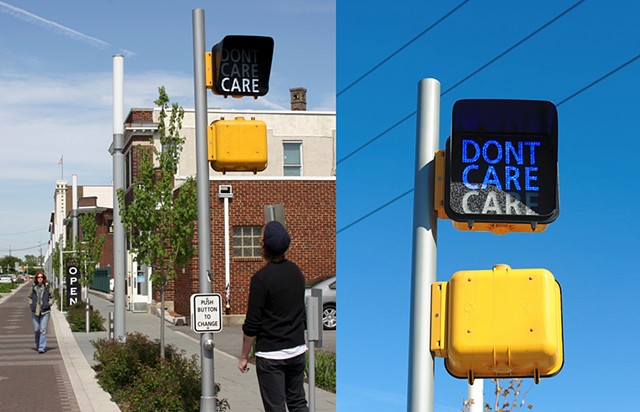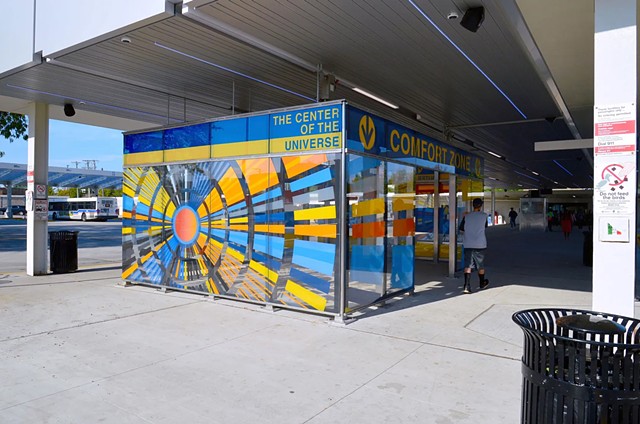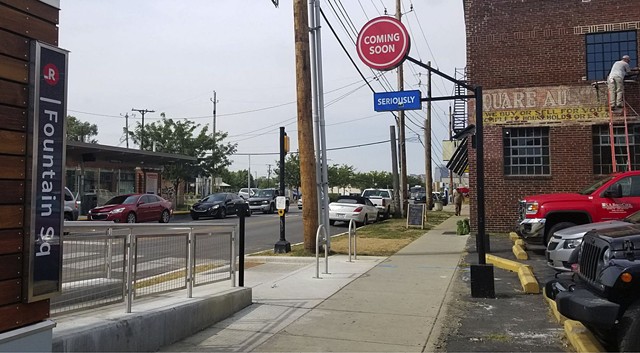Denver Post
Lonely Planet
Chicago Sun Times
WFYI
Forecast Public Art
Chicago Sun Times
WFYI
Art Without Borders Audio at 6:44
Indianapolis Star
WFYI
Channel 13 Indianapolis
Not the end of the world (Space Rays cameo)
Words
CRITICALREAD
Homebound
Ania SpyraWhen airplanes fly empty, I find myself grounded. As an immigrant cut off from her family, I remember how tears sprung to my eyes when I first saw Jamie Pawlus’s Happiness, a mock airport sign in the ticketing hall of Indianapolis International Airport. Here I am, I realized, happy to be home. This is home. A similar quality of surprise mixed with relief as the first time the U.S. Customs officer didn’t take my fingerprints but said instead, “Welcome home.”
Homebound, the migrant in me rejects the happiness of the homebody who sits down to write, so satisfied in the same armchair every day, a cat on the chair’s arm. Divorced, yet married to my house—a true housewife—I ponder homemaking: the feminist in me cannot understand the one who cooks with such joy. Now, the Pole and the American, the traveler and the homebody, the feminist and the housewife nest peacefully in the two bedrooms of my Midwestern Sears kit bungalow.
Some time after I saw her playful sign, I heard Pawlus interviewed on local radio. When the exhibition period ended, she packed her art piece into her car’s trunk, “The vinyl I took off the display case was like a giant sticker all wadded up into a giant ball that got really dirty quick—I finally had to accept its demise and toss it in the trash.”
I mourned the temporary nature of that public-art installation in my deep attachment to what it achieved, as it jolted me out of my routine trajectory and sent me towards epiphany instead of baggage claim. But if the artist herself accepted her artwork’s transience, I too can welcome impermanence, fluid definitions of self and home: though Happiness ends, so will these strange times.
Ania Spyra is an immigrant wordsmith living in Indianapolis with her deaf cat Kicia. She teaches literature at Butler University.









